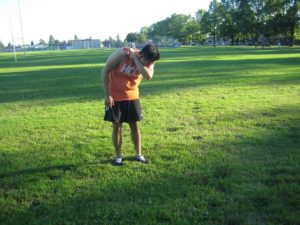Acute sinusitis involves the sinus cavities where they become swollen and inflamed. The sinuses are miniature spaces filled with air within the forehead and cheekbones. If acute, it arises rapidly, over a short span of time and lasts briefly. Generally, young children and women are more likely to develop acute sinusitis.
Some of the usual causes of acute sinusitis include a viral infection such as common cold or a bacterial infection such as upper respiratory tract infections.
Risk factors
Some of the risk factors linked with acute sinusitis typically include:
- Hay fever or other allergic ailments
- Medical conditions such as GERD and cystic fibrosis
- Congenital defects of the nasal passages
- Nasal tumors
- Immune-related ailments
- History of asthma
- Smoking
Some of the usual causes of acute sinusitis include a viral infection such as common cold or a bacterial infection such as upper respiratory tract infections. - Previous injuries to the cheeks or nose
- Medical procedures such as the insertion of an endotracheal or nasogastric tube
What are the indications?
Acute sinusitis generally lasts for 4-30 days and characterized by the following:
- Dense yellowish or greenish drainage from the nose or from the back part of the throat
- Blockage or congestion of the nose which results to difficulty breathing
- Pain in the upper jaw and teeth
- Tenderness, pain and swelling around the cheeks, eyes, nose and forehead
- Diminished sense of taste and smell
- Heavy breathing during night time
The other signs that might arise include headache, ear pain, bad breath, sore throat, body ache, fatigue and fever.
Management of acute sinusitis
It is important to note that acute sinusitis does require specialized treatment if triggered by a virus. Some of the self-care measures are generally enough to manage the condition.
If acute sinusitis is triggered by other factors, the following might be useful:
- Saline nasal spray to help clear the nasal passages
- Decongestants might be given that is available in oral, nasal sprays and liquids
- Over-the-counter pain medications can be given.
- Nasal corticosteroids can provide relief by reducing the inflammation
- Antibiotics are given if the cause is bacteria. The prescribed course of treatment must be completed, usually 10-14 days.
- Antifungal medications are given if fungus is the cause.

